Gravity Assist Podcast: Solar Storms, with Alex Young
The Gravity Assist Podcast is hosted by NASA's Chief Scientist, Jim Green, who each week talks to some of the greatest planetary scientists on the planet, giving a guided tour through the Solar System and beyond in the process. This week, he's joined by Alex Young, a solar scientist from NASA's Goddard Space Flight Center, to discuss the mechanisms behind the Sun's violent outbursts.
You can listen to the full podcast here, or read the abridged transcript below. [Stunning NASA Image Lets You Watch the Sun Explode in Real Time]
Jim Green: What do we mean when we use the term, 'space weather'?
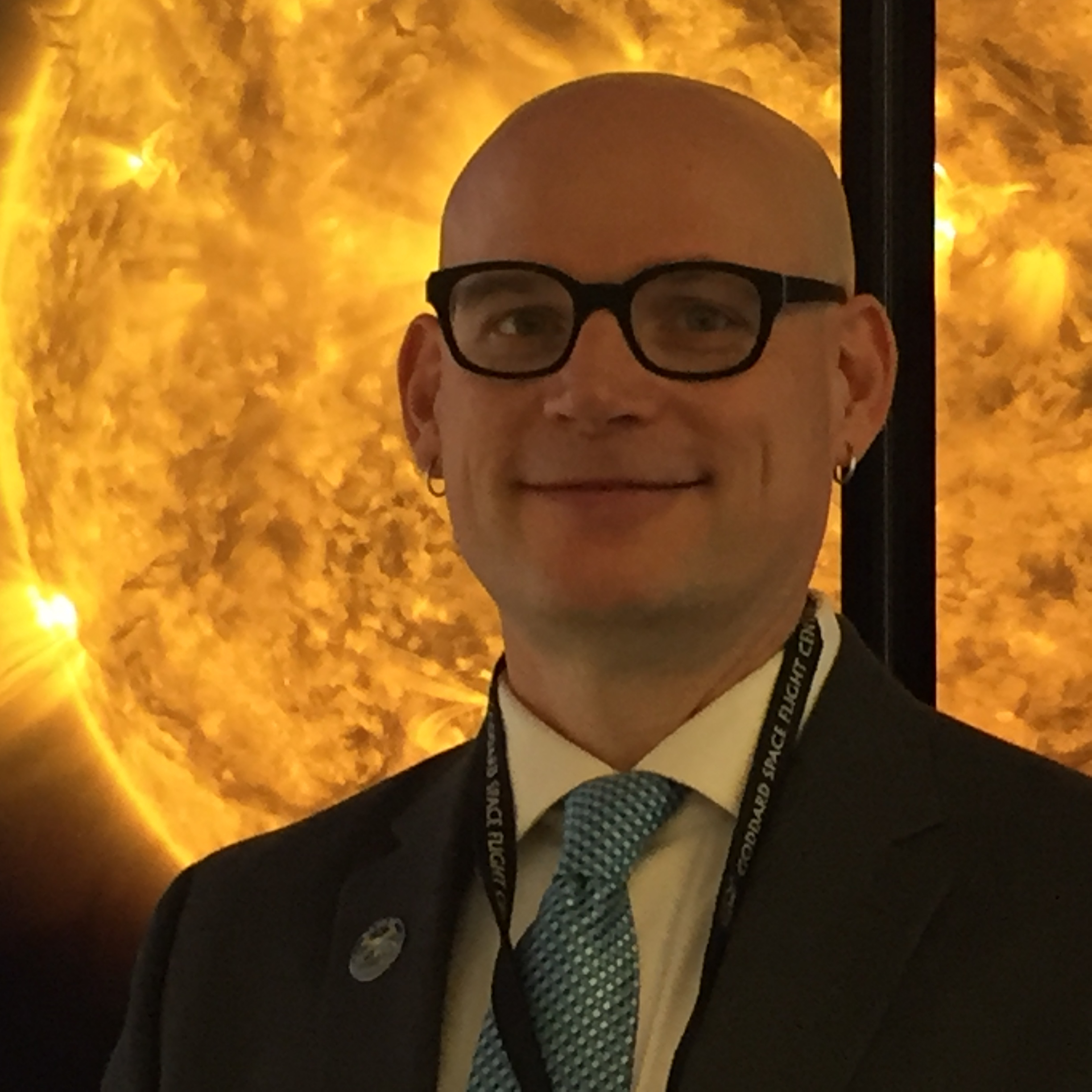
Alex Young: Well, space weather is this environment in the Solar System that's created by the Sun and the energy and matter that it puts out, and how that interacts with all the bodies in the Solar System. [There is] this sort of somewhat steady wind that's coming off the Sun, we call it the solar wind, and that's the Sun's hot atmosphere that is streaming out into space. It carries away the Sun's magnetic field and sometimes we even get these explosions, and they're huge — almost like tsunamis – that ride on top of the solar wind, and these are the more energetic phenomena that make up space weather.
Jim Green: So these are things like flares and coronal mass ejections?
Alex Young: Right. The Sun has a very strong magnetic field and that magnetic field gets twisted up inside of it, much like rubber bands get twisted; they have tension, they have pressure, [and] sometimes they get twisted enough and they snap violently, releasing energy [in the form of] a flash of light that we call a solar flare. And sometimes they spit out these huge blobs of material. Those are called coronal mass ejections (CMEs), and both [flares and coronal mass ejections] can create shock waves that excite particles to [high] speeds and so we get this storm of energetic particles.
Jim Green: Those particles can affect instruments on our spacecraft, ands also have implications for human exploration not only on the [International Space] Station but for when we go beyond low-Earth orbit too.
Breaking space news, the latest updates on rocket launches, skywatching events and more!
Alex Young: Exactly, and they are creating this very, very dynamic but hazardous and hostile environment [not only] for humans out in space, but [also for] all our technology, because all this stuff is electromagnetic and interacts with technology, which is electric in nature.
Jim Green: Alex, what's the worst solar flare you've ever seen from the missions you've been involved in?
Alex Young: Well, the biggest one that I know of — and it actually happens to be the biggest one that was ever been recorded in the Space Age — happened during a time period of about two weeks. [During a period between] the end of October to the beginning of November 2003 [there were the] Halloween storms, and one of those flares that occurred just as the flaring region was rotating out of view on 4th November created what we call an X-class flare, and this one was off the charts. It was bigger than anything we'd ever seen, and in fact our instruments couldn't even record it, so we had to estimate how big it really was.
Jim Green: When these flares take off and they start accelerating particles does that happen in all directions, or is it very directional?
Alex Young: The light from flares is not directional, it's pretty isotropic. So if you see it anywhere that region is visible on the Sun. But the particles, those are very directional. They are created by jets and those particles are actually slamming into the Sun, creating the light, [and] then streaming out into space.
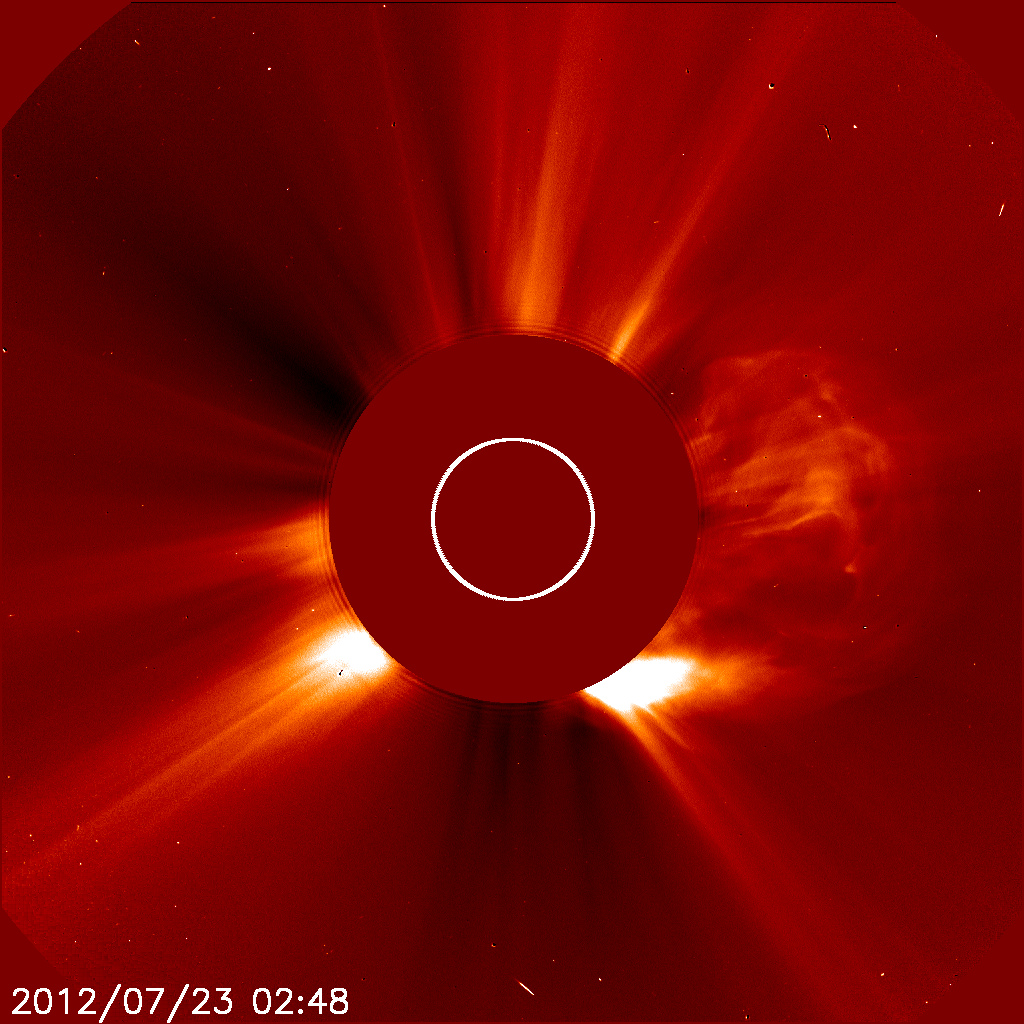
Jim Green: What's the worst CME you've ever seen?
Alex Young: Well the worst CME I've ever seen also happens to be the biggest we've seen in the Space Age. In July 2012 there was an event that actually happened on the side of the Sun. It was caught by one of our spacecraft, STEREO, which [is actually two spacecraft] orbiting the Sun, and we measured this CME moving at a phenomenal 3,500 kilometers per second. It's the biggest, fasted one we've ever recorded.
Jim Green: So these are bubbles of reconnected magnetic field and in those bubbles are all the atmosphere that the bubbles capture, and they just sort of lift off and fly at us?
Alex Young: Exactly. And the crazy thing is that they're really huge — they start off bigger than Earth in size and they quickly expand as they're moving away from the Sun, and very quickly they can then fill huge portions of the inner Solar System. And they're carrying billions of tons of material as well as the magnetic field of the Sun inside of them.
Jim Green: Now a CME may or may not hit the Earth, but when they do, we're in for a beautiful dazzling display of auroral lights.
Alex Young: And it's amazing. But there's so much more that happens when all of that stuff is interacting with Earth's magnetic field and the tear-shaped bubble around the Earth we call the magnetosphere.
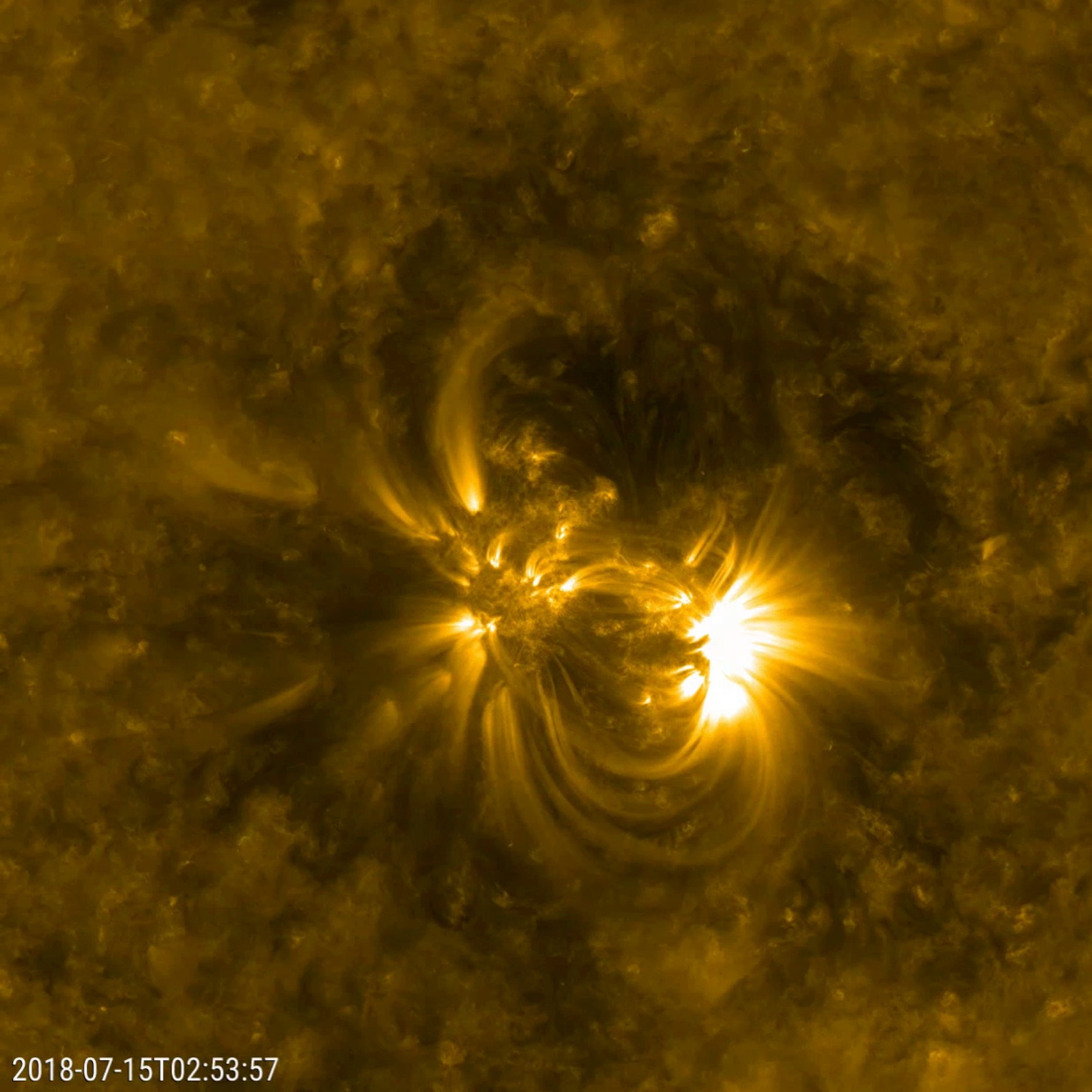
Jim Green: Have we seen everything the Sun can put out in terms of space weather?
Alex Young: Most definitely not. We have not seen even a blink of an eye of the life of the Sun. When the Sun was younger it was far more active, and we've really only seen a little bit [of that]. We know, by looking at historical records of aurorae that there [have been] huge storms. But we also see signatures in radioactive elements — carbon-12, beryllium-10. These are left by nuclear reactions in the atmosphere with particles [from the Sun] and we can see these traces in things like ice cores and tree rings, so we know there have been much bigger events in the past.
Jim Green: What are some of the big historic solar storms that we've been studying?
Alex Young: There have been a few in the modern age. There's one that I talked about, the Halloween storms, [which were a] whole series [of events] during October/November 2003. A very famous one, in March 1989, caused a power outage in Quebec in Canada. But the big one that most people refer to is what's called the Carrington Event. That was seen by Richard Carrington in England in September 1859. There were a series of events and he saw the first white-light flare, [which is] a solar flare visible in white light with a telescope, and then a few days later, they observed aurorae here on Earth. That's the first time they made the connection between these magnetic eruptions on the Sun, the flare, and something occurring here on Earth.
Jim Green: Carrington saw the flare and then a coronal mass ejection lifted off. Seventeen hours later, there was the aurora. Now coronal mass ejections typically take 80 hours to reach here from the Sun, and so this thing was really moving. It had an enormous amount of mass and then the aurora was observed cutting right through the United States, through Mexico, and down into Central America. So a pretty spectacular event.
Alex Young: t was a really cool event for a lot of reasons and we've seen similar things. Even with the July 2012 event, the speeds were comparable — about 17 hours for it to reach about the distance from the Sun to the Earth.
Jim Green: Now that one didn't hit the Earth.
Alex Young: That one didn't hit the Earth, it hit a spacecraft to the side of the Earth, STEREO. But that spacecraft was at about the same distance. [Anatomy of Sun Storms and Solar Flares (Infographic)]
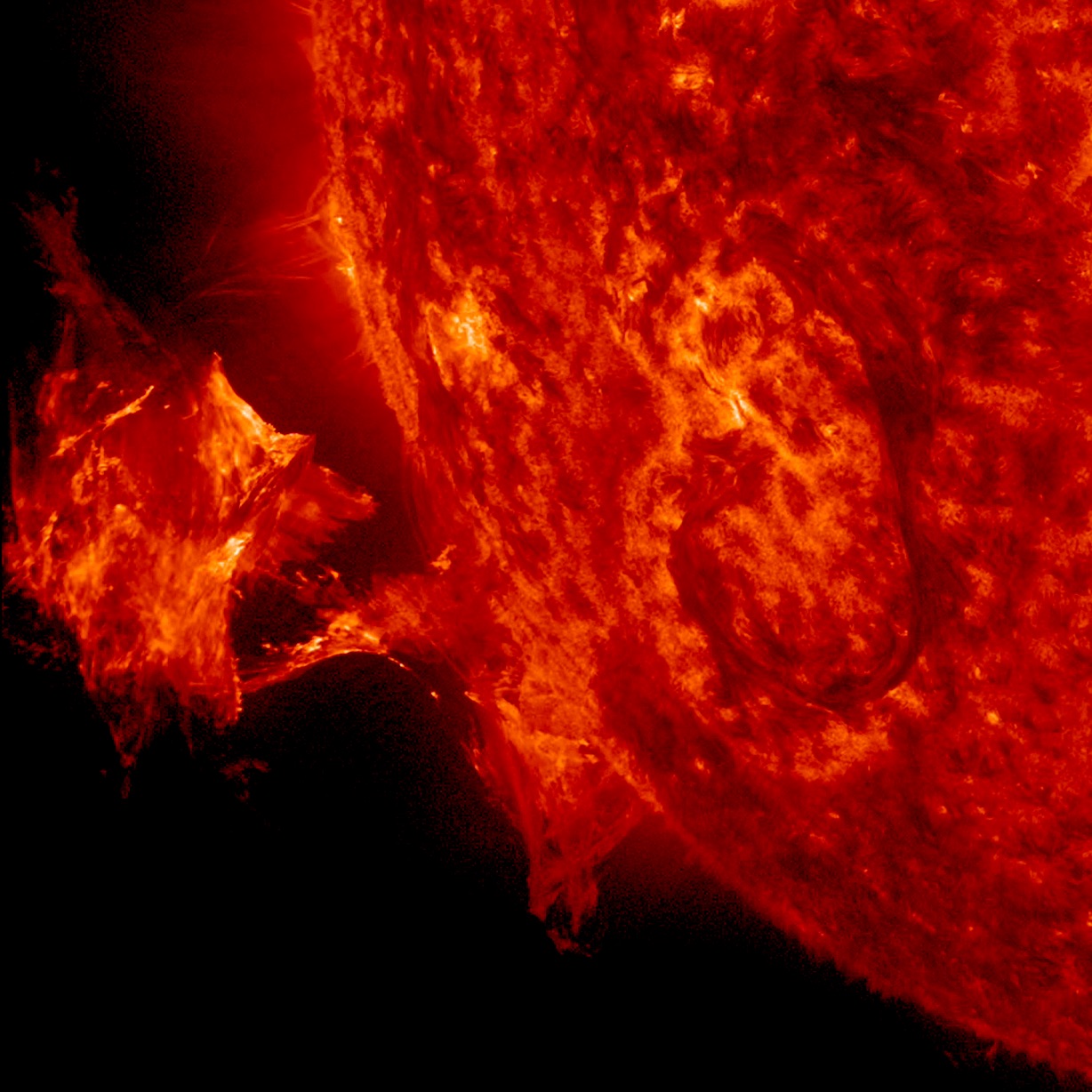
Jim Green: Now, they [CMEs] come from really big sunspots.
Alex Young: We're talking sunspots that are many times the size of the Earth. And these sunspots, the bigger they get, the more complex they get. We can see how much energy they have contained inside them, which gives an indication of what sort of activity might we see.
Jim Green: Are there other events like the Carrington Event even further back in the past?
Alex Young: There's one that's been talked about recently, called the Charlemagne Event because it's estimated to be within a period of about 774 or 775AD, somewhere in that period during the time of Charlemagne, and it was recorded in carbon-14 in tree rings. This event was 10 to 20 times bigger than the Carrington Event. And that's just massive.
Jim Green: What would happen to our technological infrastructure if an event like that occurred today?
Alex Young: It could be quite catastrophic. There have been studies by the National Academies that estimate that there would certainly be billions of dollars of damage, there are even estimates of up to trillions of dollars because it would have such a global impact on our technology infrastructure. We could see power outages across the globe and in interconnected power grids especially. There would also be impact to communications and we would possibly lose many satellites. We're now in an age of technology that we didn't have even in 2003, and certainly not in 1989. So we don't really know what a massive or strong solar event would do to the infrastructure that we have today.
Jim Green: Now that we're becoming more aware of how active the Sun could be, how can we protect our technology here on Earth?
Alex Young: There are a lot of things we can do. One is simply prediction; that is, trying to make some sort of estimate of when an event is going to occur. Now as you mentioned, CMEs take some time to get here. But for a solar flare, there's not a lot you can do. Once you see it, it's here. [In that case] you just have to be prepared and have a fast reaction time. Another thing that we can do, when we talk about the impact on the power grids, is that we can improve the power grids themselves, improve the infrastructure, and even when we know an event is coming, we can do simple things like turning the power grid off for a short amount of time. It's just like if you knew there was a lightning storm coming to your house, the first thing you would do is unplug your stereo.
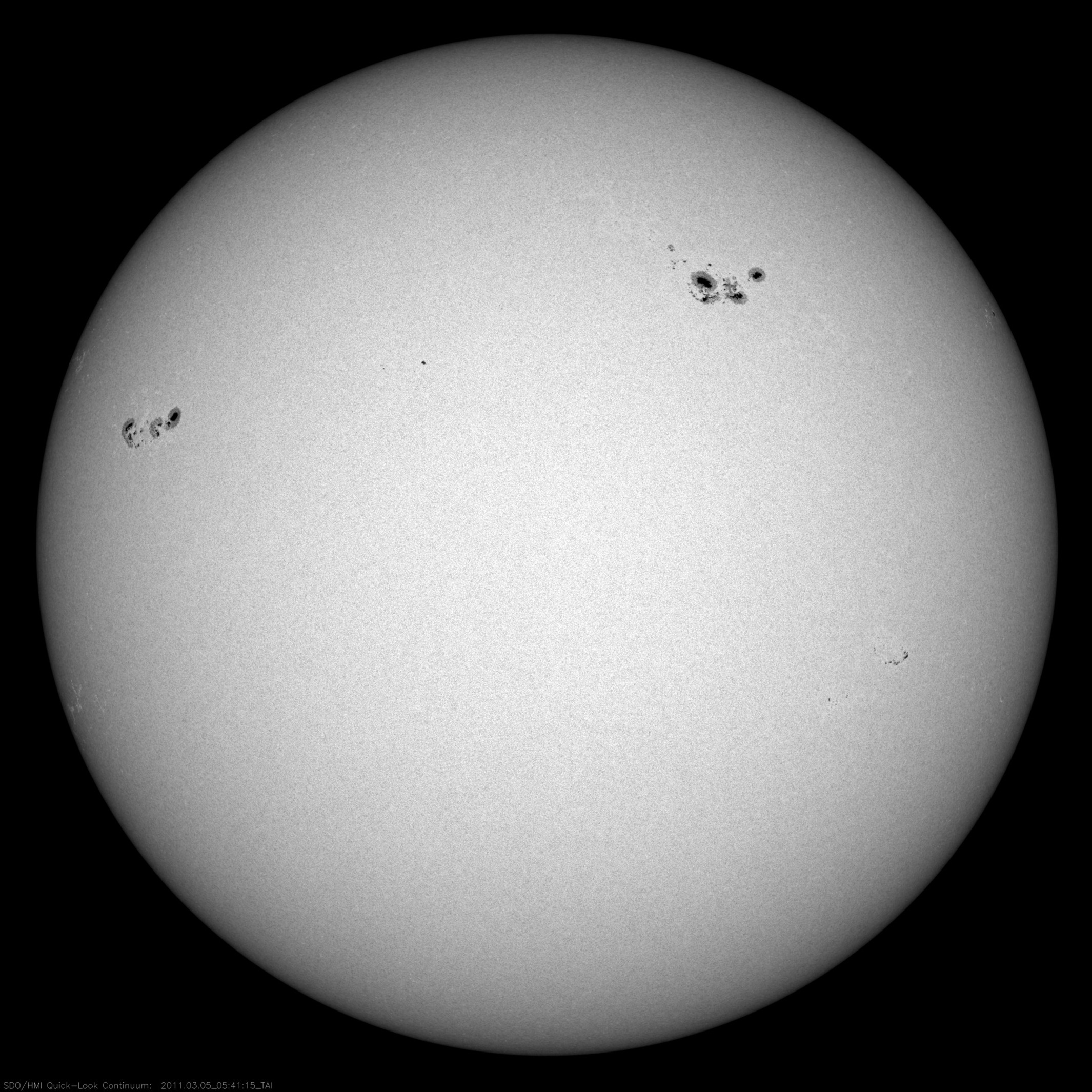
Jim Green: In fact, how it affects our power grids is really because of the aurora. The aurora has huge currents that are in the ionosphere, so as they pass overhead, they induce other currents in our power grid that aren't usually there, and therefore they can overload the transformers, burn them out, and that's what causes the massive power-outages.
Alex Young: Exactly, because these currents are looking for large conductors to travel through.
Jim Green: Do you think there's a connection between space weather and its importance to the formation of life in our Solar System?
Alex Young: Absolutely! One of the things we know is the Sun has changed over time. It was much dimmer in the past, spinning much faster, but it was also much more active. We estimate the early Sun was producing many Carrington-like events on a daily basis. Also the spectrum of that Sun was different. [Back then] there was much more ultraviolet, much more X-rays, so all the planets were being bathed by huge amounts of radiation. This had an impact on how atmospheres themselves formed. This radiation is interacting with these atmospheres, changing how they evolve, and it could have had an impact on the energy source needed to spark life.
Jim Green: One of the things that I love to do when I talk to my colleagues is to try and understand how they got into this field. What were the events in their life that really got them excited about their science, gave them that gravity assist that propelled them forward to become the scientist they are today? So Alex, what's your gravity assist?
Alex Young: Well, it's a multi-part assist. It's a couple of little pushes and then one giant push. When I was a young kid I saw the original Star Trek in syndication, and I was fascinated by this idea of exploring space and especially the character of Mr. Spock, so I thought this would be so cool to be able to do that. Then around the same time I saw a show by Carl Sagan called Cosmos, [in which he took the viewer] around the Universe in a space ship. I started to see, hey, I can actually do this. I can actually be an explorer like Mr. Spock, but I can do it in real life and study the Universe from here with telescopes and spacecraft. It was an exciting time because it was the early 1980s, so the Voyager results were coming out. I was writing to NASA and they were sending me pictures from Jupiter and Saturn. At the same time I was getting specs for the space shuttle, they were just beginning with the launch of that, so all this was happening as I slowly slipped into high school. And my dad was an art professor, and one of his colleagues was a physics professor, so they made a deal. The physics professor's daughter wanted to study art. And I wanted to study physics. So they said, if we can swap and in the afternoons they go and meet with each other and learn. So I went and met with the physicist while his daughter studied with my dad, and I learned about physics. He helped me, I built a laser and went to the science fair and really got into all this. This sort of came together finally, and that was the piece that just shot me out. That was the really, really serious assist.
This story was provided by Astrobiology Magazine, a web-based publication sponsored by the NASA astrobiology program. This version of the story published on Space.com. Follow us on Twitter @Spacedotcom or on Facebook.
Join our Space Forums to keep talking space on the latest missions, night sky and more! And if you have a news tip, correction or comment, let us know at: community@space.com.

The National Aeronautics and Space Administration (NASA) is the U.S. government agency in charge of the civilian space program as well as aeronautics and aerospace research. Founded in 1958, NASA is a civilian space agency aimed at exploring the universe with space telescopes, satellites, robotic spacecraft, astronauts and more. The space agency has 10 major centers based across the U.S. and launches robotic and crewed missions from the Kennedy Space Center in Cape Canaveral Florida. Its astronaut corps is based at the Johnson Space Center in Houston. To follow NASA's latest mission, follow the space agency on Twitter or any other social channel, visit: nasa.gov.

